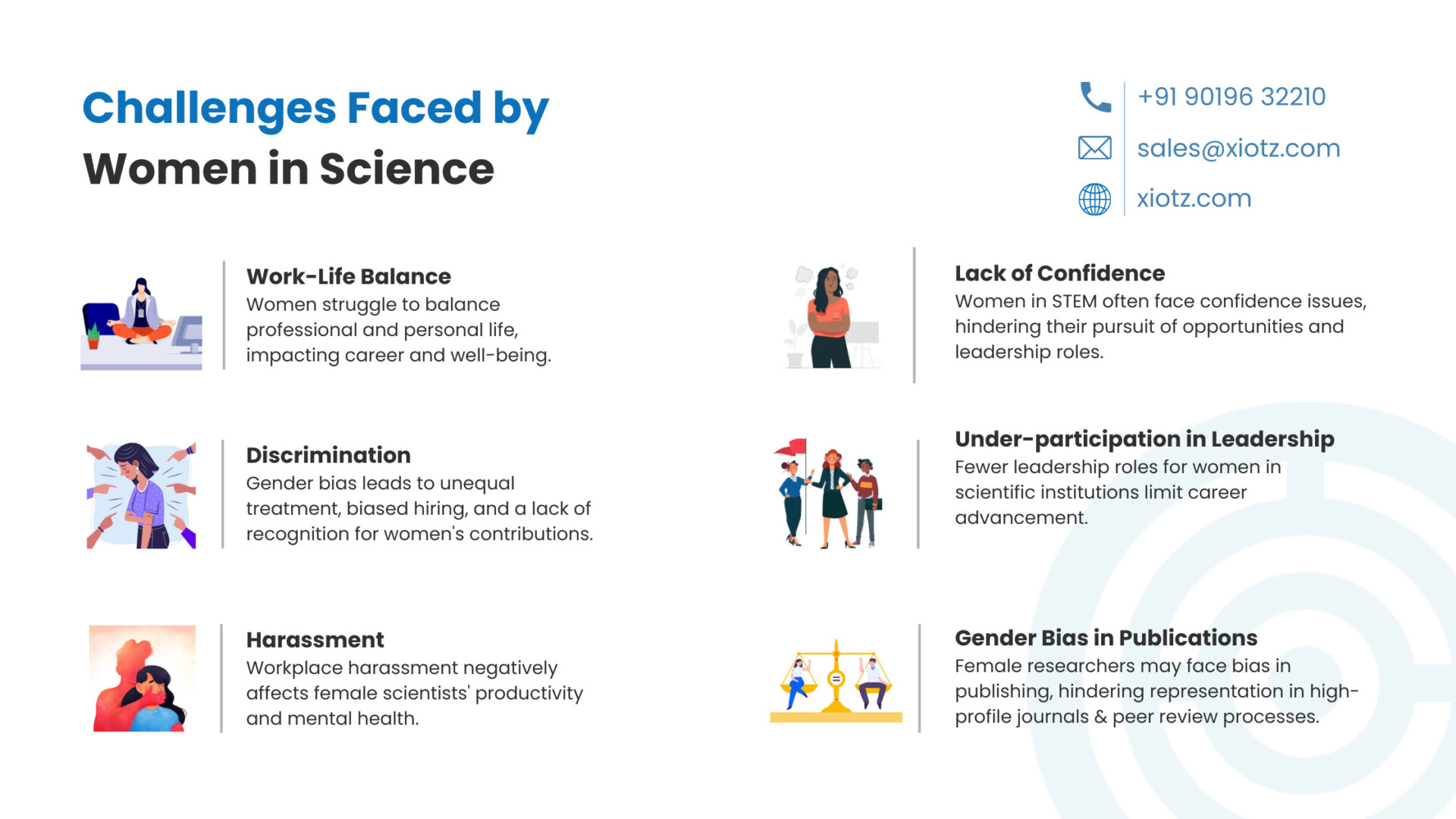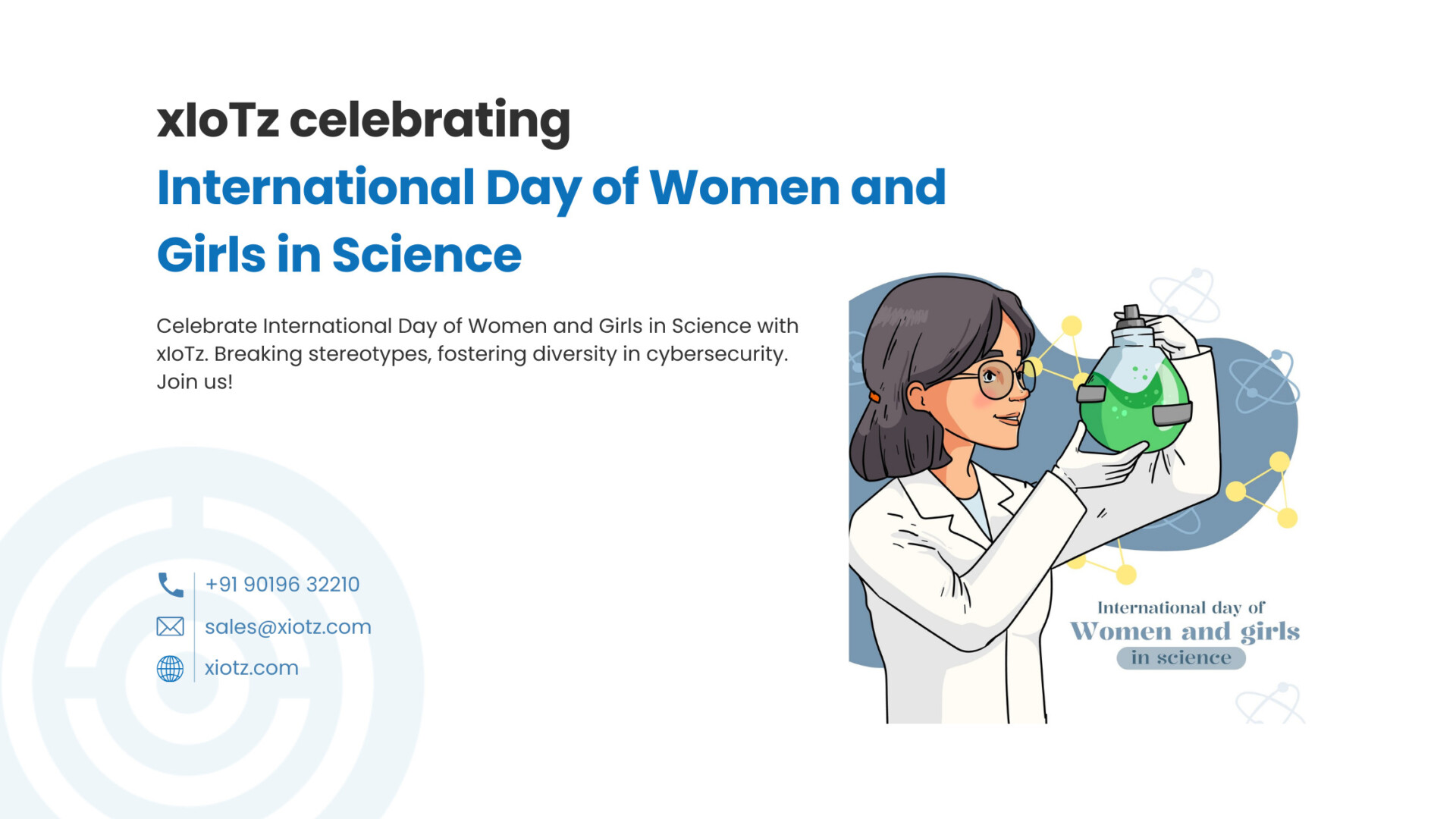Table of Contents
xIoTz celebrating “International Day of Women and Girls in Science”
Introduction
International Women and Girls in Science Day is an annual celebration of scientists that aims to recognize the importance of women and girls in science and technology. As a result this promotes gender equality in STEM (science, technology, engineering and mathematics), and inspire future generations of women.
Why It Matters
Celebrating women and girls in science is essential for fostering diversity, innovation, and progress in scientific fields. By significantly highlighting the achievements and contributions of women scientists, we break down the barriers and stereotypes. And thus paving the way for more inclusive and equitable scientific communities.
History of the Day
The International Day of Women and Girls in Science was established by the United Nations General Assembly in 2015 to address the gender gap in STEM fields. It was built upon previous efforts to engage women in science and technology. As well as acknowledging the important contributions of women scientists throughout history.
Statistics on Women in STEM
Despite progress in recent years, women remain underrepresented in STEM disciplines. According to UNESCO, less than 30% of researchers worldwide are women, and they are often concentrated in fields like social sciences and humanities rather than STEM.
Challenges Faced by Women in Science
- Work-Life Balance: Balancing professional responsibilities with personal obligations can be challenging for women in science, thus impacting their career advancement and well-being.
- Discrimination: Women often face gender discrimination in the scientific workplace, including unequal treatment, biases in hiring and promotion, and lack of recognition for their contributions.
- Harassment: Instances of harassment and bullying at work can create hostile environments for female scientists, affecting their productivity and mental health.

- Lack of Confidence: Many women in STEM struggle with confidence issues, leading to self-doubt and hesitation in pursuing career opportunities and leadership roles.
- Under-participation in Leadership: Women generally have fewer leadership positions in scientific institutions and organizations. Hence, limiting their influence and opportunities for advancement.
- Gender Bias in Publications: Female researchers may face gender bias in publishing, with their work being underrepresented in high-profile journals and facing challenges in peer review processes.
Inspiring Women in Science
Despite these challenges, numerous women have made groundbreaking contributions to science.
- Marie Curie: A pioneer in radioactivity, she was the first woman to win a Nobel Prize and the only person to win Nobel Prizes in two different sciences.
- Ada Lovelace: Regarded as the first computer programmer for her work on Charles Babbage’s early mechanical general-purpose computer, the Analytical Engine.

- Rosalind Franklin: Her X-ray diffraction images of DNA were critical to the discovery of its double helix structure, although her contributions were initially overlooked.
- Katherine Johnson: A mathematician whose calculations were crucial to NASA’s space missions, including the first manned spaceflight by an American astronaut..
Encouraging Girls to Pursue STEM
To bridge the gender gap in STEM, it is crucial to encourage girls to pursue interests in science and technology from an early age. This can be achieved through 
- Hands-on learning experiences,
- Mentorship programs, and
- Exposure to diverse role models.
Supportive Initiatives and Programs
Several organizations and initiatives support women and girls in STEM. Programs like
These programs provides resources, mentorship, and networking opportunities to empower women in scientific fields.
Celebrating Diversity in Science
Diversity and inclusion are essential for driving innovation and solving complex global challenges. Embracing diverse perspectives and experiences enriches scientific research and leads to more robust and impactful discoveries.
The Role of Mentoring
Mentorship plays a crucial role in empowering women in science by providing guidance, support, and encouragement throughout their careers. Mentors can help with the challenges, expand professional networks, and inspire the confidence in aspiring female scientists.
Breaking Stereotypes
It’s time to challenge stereotypes and misconceptions about women’s capabilities in science. Women are just as capable as men in STEM fields, and by promoting inclusivity and equal opportunities, we can create a more equitable and thriving scientific community.
xIoTz contribution in International Day of Women and Girls in Science
Fostering Future Leaders:
- Leadership Representation: xIoTz boasts a female founder and CEO, Aradhana Rai, leading by example and showcasing the possibilities for women in cybersecurity.
- High Female Workforce: With over 40% women employees, xIoTz significantly exceeds industry averages, demonstrating their commitment to gender diversity.
Inspiring the Next Generation:
- STEM Education Involvement: xIoTz participates in programs or events encouraging girls’ interest in STEM, particularly cybersecurity. This could involve workshops, career fairs, or mentorship initiatives.
- Role Model Visibility: Women leaders at xIoTz serve as powerful role models, inspiring girls to see themselves in cybersecurity careers.

Championing Equity in the Industry:
- Focus on Women’s Cybersecurity Needs: xIoTz recognizes the unique online threats faced by women, like harassment and stalking. They could raise awareness through educational resources or targeted solutions.
- Partnerships with Women-Led Organizations: xIoTz could collaborate with organizations like Girls Who Code or those supporting victims of online abuse, amplifying their impact.
Overall Impact:
- Breaking Stereotypes: By showcasing successful women and participating in outreach, xIoTz challenges assumptions and encourages girls to explore STEM fields regardless of stereotypes.

- Building a More Diverse Industry: xIoTz’s internal diversity and support for women-led organizations contribute to a more inclusive cybersecurity space particularly.
Conclusion
The International Day of Women and Girls in Science serves as a reminder of the importance of gender equality in scientific fields and the need to support and celebrate the achievements of women and girls in STEM.
xIoTz’s impactful contributions on this International Day of Women and Girls in Science serve as an inspiring model. In this case, illustrating the positive changes that can be achieved through collective commitment and action.
Let us continue to celebrate, support, and empower women and girls in science, ensuring a brighter and more inclusive future for STEM fields worldwide significantly.
Related Blogs:
Importance of women in cybersecurity
Top 10 Cyber Crime against Women
Related Terms:
Reference Links:
International Day of Women and Girls in Science
International Day of Women and Girls in Science | UNESCO
Event: International Day of Women and Girls in Science 2023

